Central Asia - Uzbekistan - from Samarkand to Bukhara
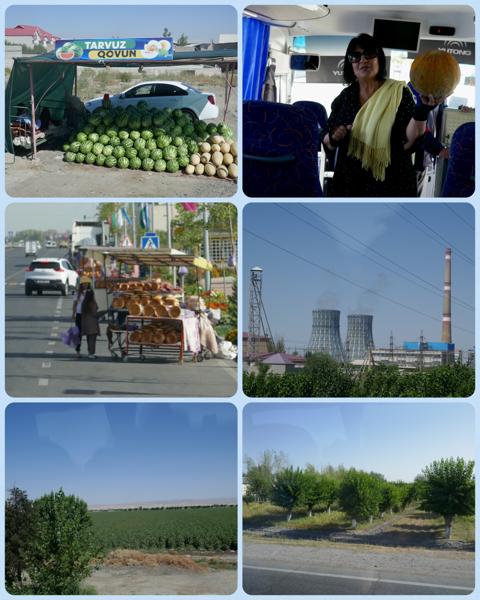
We hit the road travelling to Bukhara, the photos above show today’s Silk Road now lined with sellers of bread and melons - Gulya made a purchase of both to enjoy at lunch time.
The fields planted mainly with mulberry trees and cotton - in about three weeks the cotton plantations will be a blanket of white ready for harvesting.
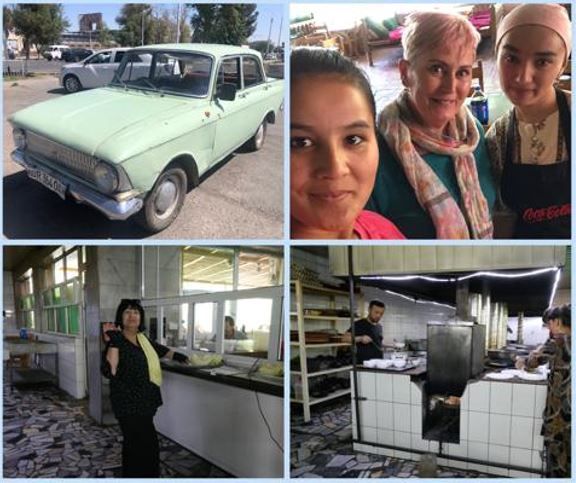
At our roadside lunch stop, daughters of the owner were bouncing about vying for photos and chatting, while Gulya was in the kitchen ensuring all was in order, as our meals were prepared.
Lots of Chevrolet cars on the road, mainly small or medium - all made in Uzbekistan, but the old Russian rattlers though, seem never to die.
Since independence there’s been a revival of traditional handicrafts and we had a chance to visit a few artisans as we travelled from Samarkand to Bukhara.
After the private concert we enjoyed in Bishkek, Kyrgyzstan, we had an opportunity to learn about Shashmaqam musical instruments made and played for us by Mr Babor. - the gijak (a four-stringed bowed spike fiddle), the doira (a drum), the stringed dutar (a two-stringed lute), and the tanbur (a long-necked string instrument).
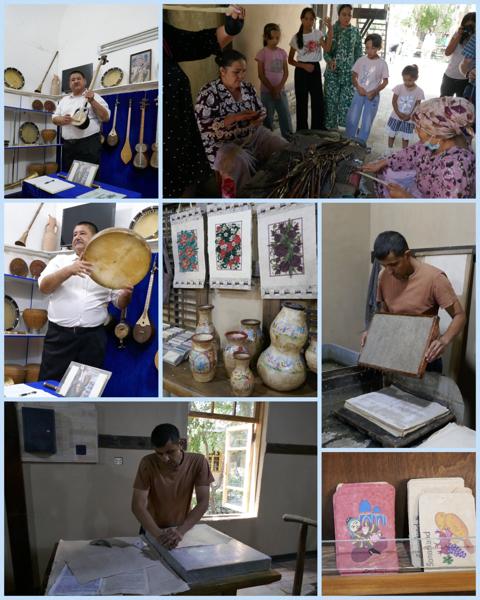
At a paper factory we learned how Samarkand acquired the skills to make paper which until the 8th century was a closely guarded secret known only to the Chinese and traded to the west on the Silk Road.
Some Chinese prisoners admitted to being paper makers and hoped to save their lives by spilling the beans - no luck though the artisans were still killed.
Made from the mulberry tree, its silky surface provides the high quality writing paper ideal for Persian and Arab manuscripts surviving from the 9th century. Even clothing, handbags and other articles are made from this paper today which can even be washed. 5kg of pulp is needed for roughly 300 sheets of A4 paper - for each sheet 30 minutes of smoothing with a flat rock is needed - painstaking work.
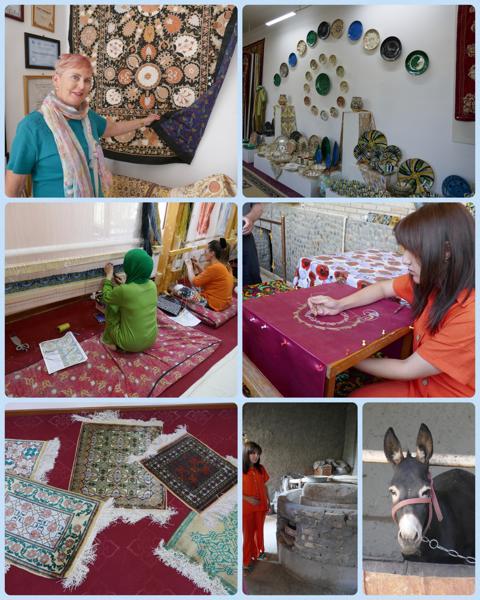
We visited a family business making textiles, pottery and carpets. A showroom displayed various textiles - suzani’s - embroidery on silk or cotton, dating back to nomadic times.
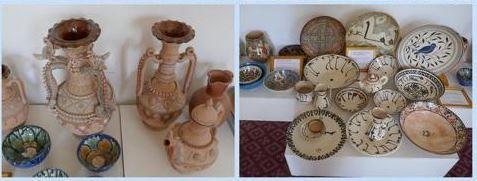
The pottery is made using traditional methods, the glaze - local sand mixed with dyes made from various plants and rocks, fired, then ground on the traditional mill by the family donkey - he’s got a good life - working only one day a month, which provides enough glaze for that month’s pottery.
The carpets take days or months to make. It was great to see women working normal hours for reasonable pay, rather than children working long hours that I have visited in other countries. I always fall in love with the beauty of these carpets - I already have quite a few at home, again resisting the urge to purchase.
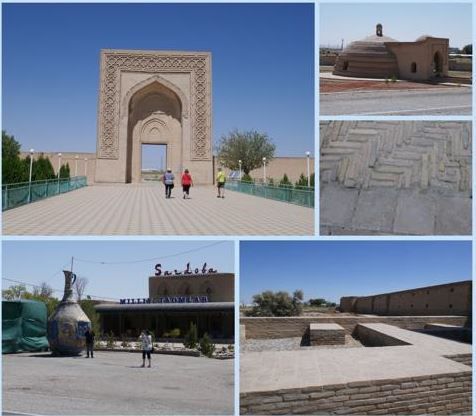
We broke the journey at an old caravanserai, which has been an overnight stop for traders traveling the silk road. The entrance, part of the walls and foundations restored including the paths. A small section has been untouched and I imagined the many feet using the well worn paving. Meerkats are usually about, but they must have been napping during our visit. Across the road a fully restored Sardoba - a covered in well - close enough to provide water to the caravanserai; far enough away for the camels to be attended - they may be the perfect pack animal for the desert, but they do smell!
We’ve seen so much in a short time. Samarkand certainly dazzled us with its glittering minarets, turquoise domes at every turn and beautiful mosaics and I loved the majestic buildings, legends and history, but I’m still looking for a taste of what the Great Silk Road was really like. I find it in Bukhara…
